“What do you think being brave means?” asks this bright picture book about LGBTQIA+ activism and activists, part of the publisher’s “My Name Is Brave” series. An initial section explains what it means to be an activist and to speak out or protest in order to make change in the world.
The book next shifts to explaining more about being LGBTQIA+, asking readers how they would feel if they were told “you couldn’t be you.” That’s what happens to many people in the LGBTQIA+ community, it continues, and that’s why activists are trying to change how the LGBTQIA+ community is treated.
It then offers some definitions about LGBTQIA+ identities. While most seem broadly accurate (if somewhat simplified for young readers), a few could have been phrased better. For example, it says, “A person’s sex can mean the biological sex they were assigned at birth, or it could be the sex they identify with.” But as Planned Parenthood explains, the term “biological sex” “doesn’t fully capture the complex biological, anatomical, and chromosomal variations that can occur.” Many LGBTQ advocates therefore avoid the term, preferring simply “sex assigned at birth,” as this article explains further. Additionally, “the sex they identify with” feels potentially confusing with “gender identity.”
And for “Plus,” the book says, “This is used to include all the letters that are missing from LGBTQIA. This makes everyone feel included.” That could be misinterpreted to mean that cisgender straight people are included, too. Defining the plus as “all the queer identities that are missing from LGBTQIA” would have been better.
Readers are then introduced to several LGBTQIA+ activists and some of the concepts they embody: Laverne Cox (visibility in the media); Arsham Parsi (helping others); Kian Tortorello-Allen (using social media); Bayard Rustin (peaceful protest), and Edith [more commonly known as “Edie”] Windsor (whose profile is followed by a general section about being brave and working to make a difference for the LGBTQIA+ community, despite naysayers). For each concept, readers are given suggestions for how to take first steps towards using those concepts and actions in their own lives. It’s an engaging way to connect these figures with their accomplishments and why they matter, but also to encourage readers to follow them in making change.
It feels questionable, however, for the book to say that Kian Tortorello-Allen “was incredibly brave to come out as gay and transgender while he was just a teenager.” As I’ve heard from some trans people (and in a related way, from people with disabilities), they’re tired of being told they’re “brave” simply for existing. (See also GLAAD’s “Tips for Allies“; search for “brave” on the page.) Conversely, I’ve also heard from some trans folks that they do think they’ve been brave just for being who they are—but since this is a point of contention, it would have been better avoided here. (Being called brave simply for existing as a queer person is different from demonstrating bravery by taking action as an activist, however, and the latter usage of bravery to refer to Tortorello-Allen and others here feels fine.)
The book’s heart is in the right place, though, and young people (perhaps with some added explanations from grown-ups) may find inspiration in it to become activists themselves.






